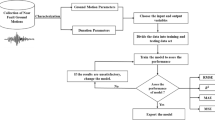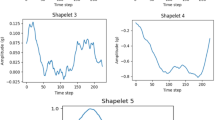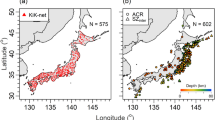Abstract
Machine learning approaches are increasingly being employed to forecast the key characteristics of strong ground motions, including the challenging classification of Pulse-Like (PL) ground motions. The PL ground motions are characterized by their impulsive nature and have the potential to cause significant damage to structures. The classification of PL ground motions continues to be a significant challenge due to the absence of consensus on their definition and categorization. This paper investigates the potential benefits of several Machine Learning Classifiers (MLCs) algorithms such as decision tree, random forest, logistic regression, naive Bayes, support vector machine, K-nearest neighbor, ensemble model, and artificial neural network models for predicting PL and Non-Pulse-Like (NPL) ground motions. In this regard, a dataset comprising 200 near-fault ground motions records compiled from active tectonic regions like Taiwan, Turkey, Iran, and Japan, was divided into 2 portions, with 75% used to train the model and the remaining 25% used for testing. Plots of performance metrics, confusion matrix, and receiver operating curve indicate that the ensemble classifier outperforms the other classifier with 86.2% accuracy and the lowest misclassification of PL and NPL ground motions. Additionally, the trained MLC has been compared with the existing ground motion classification models to further assess the accuracy of the different classifiers in the present study.










Similar content being viewed by others
Data availability
Data will be made available on request.
References
Alavi AH, & Gandomi AH (2011) A robust data mining approach for formulation of geotechnical engineering systems. Engineering Computations. ISSN: 0264–4401. https://doi.org/10.1108/02644401111118132
Alavi B, Krawinkler H (2004) Behavior of moment-resisting frame structures subjected to near-fault ground motions. Earthquake Eng Struct Dynam 33(6):687–706. https://doi.org/10.1002/eqe.369
Alimoradi A, Beck JL (2015) Machine-learning methods for earthquake ground motion analysis and simulation. J Eng Mech 141(4):04014147. https://doi.org/10.1061/(ASCE)EM.1943-7889.0000869
Alloghani M, Al-Jumeily D, Mustafina J, Hussain A, & Aljaaf AJ (2020) A systematic review on supervised and unsupervised machine learning algorithms for data science. Supervised and unsupervised learning for data science, 3–21. https://doi.org/10.1007/978-3-030-22475-2_1
Amari SI, Wu S (1999) Improving support vector machine classifiers by modifying kernel functions. Neural Netw 12(6):783–789. https://doi.org/10.1016/S0893-6080(99)00032-5
Ancheta TD, Darragh RB, Stewart JP, Seyhan E, Silva WJ, Chiou BSJ, Woodwell KE, Graves RW, Kottke AR, Boore DM, Donahue JL (2014) NGA-West2 database. Earthq Spectra 30(3):989–1005. https://doi.org/10.1193/070913EQS197M
Arabameri A, Chandra Pal S, Rezaie F, Chakrabortty R, Saha A, Blaschke T, Napoli MD, Ghorbanzadehe O, Thi Ngo PT (2022) Decision treebased ensemble machine learning approaches for landslide susceptibility mapping. Geocarto Int 37(16):4594–4627. https://doi.org/10.1080/10106049.2021.1892210
Arias A (1970) Measure of earthquake intensity. In: Hansen RJ (ed) Seismic Design for Nuclear Power Plants. MIT Press, Cambridge, MA
Asim KM, Moustafa SS, Niaz IA, Elawadi EA, Iqbal T, Martínez-Álvarez F (2020) Seismicity analysis and machine learning models for short-term low magnitude seismic activity predictions in Cyprus. Soil Dynamics Earthq Eng 130:105932. https://doi.org/10.1016/j.soildyn.2019.105932
Baker JW (2007) Quantitative classification of near-fault ground motions using wavelet analysis. Bull Seismol Soc Am 97:1486–1501. https://doi.org/10.1785/0120060255
Baker, J. W. (2008). Identification of near-fault velocity pulses and prediction of resulting response spectra. In Geotechnical earthquake engineering and soil dynamics IV (1–10). https://doi.org/10.1061/40975(318)4
Bergstra J, Bardenet R, Bengio Y, Kégl B (2011) Algorithms for hyper-parameter optimization. Advances in neural information processing systems, 24. Proc Adv Neural Inf Process Syst 2011:2546–2554
Bischl B, Casalicchio G, Feurer M, Hutter F, Lang M, Mantovani RG, van Rijn JN, Vanschoren J (2017a) OpenML benchmarking suites and the OpenML100. ArXiv preprint arXiv:1708.03731https://arxiv.org/abs/1708.03731
Bischl B, Mersmann O, Trautmann H, Weihs C (2012) Resampling methods for meta-model validation with recommendations for evolutionary computation. Evol Comput 20(2):249–275. https://doi.org/10.1162/EVCO_a_00069
Bozorgnia Y, Abrahamson NA, Atik LA, Ancheta TD, Atkinson GM, Baker JW, Baltay A, Boore DM, Campbell KW, Chiou BSJ, Darragh R (2014) NGA-West2 research project. Earthq Spectra 30(3):973–987. https://doi.org/10.1193/072113EQS209M
Breiman L (1996) Bagging Predictors Machine Learning 24:123–140. https://doi.org/10.1007/BF00058655
Brownlee, J. (2016). Logistic regression for machine learning-machine learning mastery. Available at: http://machinelearningmastery.com/logistic-regression-for-machine-learning
Calugaru V, Panagiotou M (2012) Response of tall cantilever wall buildings to strong pulse type seismic excitation. Earthq Eng Struct Dynam 41(9):1301–1318. https://doi.org/10.1002/eqe.1185
Campbell KW, & Bozorgnia Y (2023) Ground-motion model for the standardized version of cumulative absolute velocity. Earthquake Spectra, 87552930221144063. https://doi.org/10.1177/87552930221144063
Chen T, & Guestrin C (2015) Xgboost: Reliable large-scale tree boosting system. In Proceedings of the 22nd SIGKDD Conference on Knowledge Discovery and Data Mining, San Francisco, CA, USA (13–17). https://doi.org/10.1145/2939672.2939785
Choi SB, Choi JY, Park JS, Kim DW (2016) ATLS hypovolemic shock classification by prediction of blood loss in rats using regression models. Shock 46(1):92–98. https://doi.org/10.1097/SHK.0000000000000574
Damanik IS, Windarto AP, Wanto A, Andani SR, Saputra W (2019) Decision tree optimization in C45 algorithm using genetic algorithm. J Phys Conf Ser 1255(1):012012. https://doi.org/10.1088/1742-6596/1255/1/012012
Derras B, Bard PY, Cotton F, Bekkouche A (2012) Adapting the neural network approach to PGA prediction: an example based on the KiK-net data. Bull Seismol Soc Am 102(4):1446–1461. https://doi.org/10.1785/0120110088
Dickinson BW, Gavin HP (2011) Parametric statistical generalization of uniform-hazard earthquake ground motions. J Struct Eng 137(3):410–422. https://doi.org/10.1061/(ASCE)ST.1943-541X.0000330
Dike HU, Zhou Y, Deveerasetty KK, & Wu Q (2018) Unsupervised learning based on artificial neural network: a review. In 2018 IEEE International Conference on Cyborg and Bionic Systems (CBS) (322–327). IEEE. https://doi.org/10.1109/CBS.2018.8612259.
Durucan C, Şahin H, Durucan AR (2023) A new ground motion intensity measure for short period reinforced concrete structures subjected to near-fault pulse-like ground motions. Mech Based Des Struct Mach 51(4):2004–2019. https://doi.org/10.1080/15397734.2021.1886114
Ertuncay D, Costa G (2019) An alternative pulse classification algorithm based on multiple wavelet analysis. J Seismolog 23(4):929–942. https://doi.org/10.1007/s10950-019-09845-y
Ferri C, Hernández-Orallo J, Modroiu R (2009) An experimental comparison of performance measures for classification. Pattern Recogn Lett 30(1):27–38. https://doi.org/10.1016/j.patrec.2008.08.010
Freund Y, Schapire RE (1997) A decision-theoretic generalization of on-line learning and an application to boosting. J Comput Syst Sci 55(1):119–139. https://doi.org/10.1006/jcss.1997.1504
Diaz GI, Fokoue-Nkoutche A, Nannicini G, Samulowitz H (2017) An effective algorithm for hyperparameter optimization of neural networks. IBM J Res Dev 61:1–20. https://doi.org/10.1147/JRD.2017.2709578
Gandomi AH, Alavi AH, Mousavi M, Tabatabaei SM (2011) A hybrid computational approach to derive new ground-motion prediction equations. Eng Appl Artif Intell 24(4):717–732. https://doi.org/10.1016/j.engappai.2011.01.005
Luo G (2016a) A review of automatic selection methods for machine learning algorithms and hyper-parameter values. Net Model Analy Health Inform Bioinform 5(1):1–16. https://doi.org/10.1007/s13721-016-0125-6
García-Rodríguez MJ, Malpica JA, Benito B, Díaz M (2008) Susceptibility assessment of earthquake-triggered landslides in El Salvador using logistic regression. Geomorphology 95(3–4):172–191. https://doi.org/10.1016/j.geomorph.2007.06.001
Gavin HP, Dickinson BW (2011) Generation of Uniform-Hazard Earthquake Ground Motions. Journal of Structural Engineering 137(3):423–432. https://doi.org/10.1061/(ASCE)ST.1943-541X.0000331
Güllü H, Erçelebi E (2007) A neural network approach for attenuation relationships: an application using strong ground motion data from Turkey. Eng Geol 93(3–4):65–81. https://doi.org/10.1016/j.enggeo.2007.05.004
Gunasegaran, T., & Cheah, Y. N. (2017, May). Evolutionary cross validation. In 2017 8th International Conference on Information Technology (ICIT) (pp. 89–95). IEEE. https://doi.org/10.1109/ICITECH.2017.8079960
Guyon I, Saffari A, Dror G, Cawley G (2010) Model selection: beyond the bayesian/frequentist divide. J Mach Learn Res 11(1)
Habib A, Youssefi I, Kunt MM (2022) Identification of pulse-like ground motions using artificial neural network. Earthq Eng Eng Vib 21(4):899–912. https://doi.org/10.1007/s11803-022-2127-y
Hand DJ (2006) Classifier technology and the illusion of progress. Stat Sci 21(1):1–14. https://doi.org/10.1214/088342306000000060
Ho TK. (1995, August). Random decision forests. In Proceedings of 3rd international conference on document analysis and recognition 1, 278–282. https://doi.org/10.1109/ICDAR.1995.598994.
Huang G, Qiu W, Zhang J (2017) Modelling seismic fragility of a rock mountain tunnel based on support vector machine. Soil Dyn Earthq Eng 102:160–171. https://doi.org/10.1016/j.soildyn.2017.09.002
Janikow CZ (1998) Fuzzy decision trees: issues and methods. IEEE Trans Systs Man Cybernetics Part B 28(1):1–14. https://doi.org/10.1109/3477.658573
Janssens ACJ, Martens FK (2020) Reflection on modern methods: revisiting the area under the ROC Curve. Int J Epidemiol 49(4):1397–1403. https://doi.org/10.1093/ije/dyz274
Jiang, L., Cai, Z., Wang, D., & Jiang, S. (2007, August). Survey of improving k-nearest-neighbor for classification. In Fourth international conference on fuzzy systems and knowledge discovery (FSKD 2007) 1, 679–683 https://doi.org/10.1109/FSKD.2007.552
Junwu D, Tong M, Lee GC, Xiaozhai Q, Wenting B (2004) Dynamic responses under the excitation of pulse sequences. Earthq Eng Eng Vib 3:157–169. https://doi.org/10.1007/BF02858231
Kalkan E, Kunnath SK (2006) Effects of fling step and forward directivity on seismic response of buildings. Earthq Spectra 22(2):367–390. https://doi.org/10.1193/1.2192560
Kardoutsou V, Taflampas I, Psycharis IN (2017) A new pulse indicator for the classification of ground motions. Bull Seismol Soc Am 107(3):1356–1364. https://doi.org/10.1785/0120160301
Kerh T, Ting SB (2005) Neural network estimation of ground peak acceleration at stations along Taiwan high-speed rail system. Eng Appl Artif Intell 18(7):857–866. https://doi.org/10.1016/j.engappai.2005.02.003
Kohavi R (1995) A study of cross-validation and bootstrap for accuracy estimation and model selection. In Ijcai 14(2):1137–1145
Kohestani VR, Hassanlourad M, Ardakani AJNH (2015) Evaluation of liquefaction potential based on CPT data using random forest. Nat Hazards 79(2):1079–1089. https://doi.org/10.1007/s11069-015-1893-5
Kohrangi M, Vamvatsikos D, Bazzurro P (2019) Pulse‐like versus non‐pulse‐like ground motion records: spectral shape comparisons and record selection strategies. Earthquake Engineering & Structural Dynamics 48(1):46–64. https://doi.org/10.1002/eqe.3122
Kong Q, Trugman DT, Ross ZE, Bianco MJ, Meade BJ, Gerstoft P (2019) Machine learning in seismology: turning data into insights. Seismol Res Lett 90(1):3–14. https://doi.org/10.1785/0220180259
Kotsiantis SB, Zaharakis I, Pintelas P (2007) Supervised machine learning: a review of classification techniques. Emerg Artif Intell Appl Comput Eng 160(1):3–24
Kramer SL (1996) Geotechnical earthquake engineering. Pearson Education, India
Liu Y, Liu S, Wang Y, Lombardi F, Han J (2020) A survey of stochastic computing neural networks for machine learning applications. IEEE Trans Neural Net Learn Syst 32(7):2809–2824. https://doi.org/10.1109/TNNLS.2020.3009047
Luo G (2016b) A review of automatic selection methods for machine learning algorithms and hyper-parameter values. Net Model Analys Health Inform Bioinform 5:1–16. https://doi.org/10.1007/s13721-016-0125-6
Mahmoudi SN, Chouinard L (2016) Seismic fragility assessment of highway bridges using support vector machines. Bull Earthq Eng 14:1571–1587. https://doi.org/10.1007/s10518-016-9894-7
Malhotra PK (1999) Response of buildings to near-field pulse-like ground motions. Earthq Eng Struct Dynam 28(11):1309–1326. https://doi.org/10.1002/(SICI)1096-9845(199911)28:11%3C1309::AID-EQE868%3E3.0.CO;2-U
Manfredi G, Polese M, Cosenza E (2003) Cumulative demand of the earthquake ground motions in the near source. Earthq Eng Struct Dynam 32(12):1853–1865. https://doi.org/10.1002/eqe.305
Mavroeidis GP, and AS Papageorgiou (2002) Near-source strong ground motion: characteristics and design issues. Proc. of the Seventh U.S. National Conf. on Earthquake Engineering (7NCEE), Boston, Massachusetts.
Mavroeidis GP, Papageorgiou AS (2003) A mathematical representation of near-fault ground motions. Bull Seismol Soc Am 93:1099–1131. https://doi.org/10.1785/0120020100
McCulloch WS, Pitts W (1943) A logical calculus of the ideas immanent in nervous activity. Bull Math Biophys 5:115–133. https://doi.org/10.1007/BF02478259
Migut MA, Worring M, Veenman CJ (2015) Visualizing multi-dimensional decision boundaries in 2D. Data Min Knowl Disc 29:273–295. https://doi.org/10.1007/s10618-013-0342-x
Mishra M (2021) Machine learning techniques for structural health monitoring of heritage buildings: A state-of-the-art review and case studies. J Cult Herit 47:227–245. https://doi.org/10.1016/j.culher.2020.09.005
Moustafa A, Takewaki I (2010) Characterization and modeling of near-fault pulse-like strong ground motion via damage-based critical excitation method. Struct Eng Mech 34(6):755. https://doi.org/10.12989/sem.2010.34.6.755
Moustafa SS, Mohamed GEA, Elhadidy MS, Abdalzaher MS (2023) Machine learning regression implementation for high-frequency seismic wave attenuation estimation in the Aswan Reservoir area. Egypt Environ Earth Sci 82(12):307. https://doi.org/10.1007/s12665-023-10947-7
Murphy KP (2012) Machine learning: a probabilistic perspective. MIT press, Cambridge, MA
Nikam SS (2015) A comparative study of classification techniques in data mining algorithms. Orient J Comp Sci Technol 8(1):13–19
Panella DS, Tornello ME, Frau CD (2017) A simple and intuitive procedure to identify pulse-like ground motions. Soil Dyn Earthq Eng 94:234–243. https://doi.org/10.1016/j.soildyn.2017.01.020
Patrick EA, Fischer FP III (1970) A generalized k-nearest neighbor rule. Inf Control 16(2):128–152. https://doi.org/10.1016/S0019-9958(70)90081-1
Ray S (2019) A quick review of machine learning algorithms. In 2019 International conference on machine learning, big data, cloud and parallel computing (COMITCon), pp 35–39. IEEE. https://doi.org/10.1109/COMITCon.2019.8862451
Reddy KK, Somala SN, Tsang HH (2021) Response of inelastic SDOF systems subjected to dynamic rupture simulations involving directivity and fling step. Soil Dyn Earthq Eng 151:106992. https://doi.org/10.1016/j.soildyn.2021.106992
Rish I (2001) An empirical study of the naive Bayes classifier. In IJCAI 2001 workshop on empirical methods in artificial intelligence, 3(22): 41–46.
Rodrigues FC, Espadoto M, Hirata R Jr, Telea AC (2019) Constructing and visualizing high-quality classifier decision boundary maps. Information 10(9):280. https://doi.org/10.3390/info10090280
Sagi O, Rokach L (2018) Ensemble learning: a survey. Wiley Interdiscip Rev: Data Min Knowl Dis 8(4):e1249. https://doi.org/10.1002/widm.1249
Samadi HR, Kimiaefar R, Hajian A (2020) Robust earthquake cluster analysis based on K-nearest neighbor search. Pure Appl Geophys 177(12):5661–5671. https://doi.org/10.1007/s00024-020-02618-6
Selker HP, Griffith JL, Patil S, Long WJ, d’Agostino RB (1995) A comparison of performance of mathematical predictive methods for medical diagnosis: identifying acute cardiac ischemia among emergency department patients. J Investig Med: Off Publ Am Fed Clin Res 43(5):468–476
Somala SN, Karthik Reddy KSK, Mangalathu S (2021) The effect of rupture directivity, distance and skew angle on the collapse fragilities of bridges. Bull Earthq Eng 19(14):5843–5869. https://doi.org/10.1007/s10518-021-01208-8
Soofi AA, Awan A (2017) Classification techniques in machine learning: applications and issues. J Basic Appl Sci 13:459–465
Sulzmann JN, Fürnkranz J, & Hüllermeier E (2007) On pairwise naive bayes classifiers. In Machine Learning: ECML 2007: 18th European Conference on Machine Learning, Warsaw, Poland, September 17–21, 2007. Proceedings 18 (pp. 371–381). Springer Berlin Heidelberg.https://doi.org/10.1007/978-3-540-74958-5 35.
Suthaharan, S. (2016). Support vector machine: machine learning models and algorithms for big data classfication. Integrated Series in Information Systems, 36. https://doi.org/10.1007/978-1-4899-7641-3
Taylor RA, Moore CL, Cheung KH, Brandt C (2018) Predicting urinary tract infections in the emergency department with machine learning. PloS one 13(3):e0194085. https://doi.org/10.1371/journal.pone.019408
Tesfamariam S, Liu Z (2010) Earthquake induced damage classification for reinforced concrete buildings. Struct Saf 32(2):154–164. https://doi.org/10.1016/j.strusafe.2009.10.002
van der Ploeg T, Austin PC, Steyerberg EW (2014) Modern modelling techniques are data hungry: a simulation study for predicting dichotomous endpoints. BMC Med Res Methodol 14(1):1–13. https://doi.org/10.1186/1471-2288-14-137
van de Lindt JW, Gin-Huat Goh (2004) Effect of earthquake duration on structural reliability Engineering Structures 26(11) 1585-1597. https://doi.org/10.1016/j.engstruct.2004.05.017
Vapnik V (1963) Pattern recognition using generalized portrait method. Autom Remote Control 24:774–780
Veggalam S, Reddy KK, Somala SN (2021) December). Collapse fragility due to near-field directivity ground motions: Influence of component, rupture distance, hypocenter location. In Structures 34:3684–3702. https://doi.org/10.1016/j.istruc.2021.09.096
Von Thun JL, Roehm LH, Scott GA, Wilson JA. (1988) Earthquake ground motions for design and analysis of dams. In: Proceedings of Earthquake Engineering and Soil Dynamics II—Recent Advances in Ground-Motion Evaluation. Park City, Utah, United States, June 27–30, 1988
Wang D, Zhang M, Li Z, Cui Y, Liu J, Yang Y, & Wang H (2015) Nonlinear decision boundary created by a machine learning-based classifier to mitigate nonlinear phase noise. In 2015 European Conference on Optical Communication (ECOC) (1–3). IEEE. https://doi.org/10.1109/ECOC.2015.7341753
Wang Y, & Ni XS (2019) Predicting class-imbalanced business risk using resampling, regularization, and model ensembling algorithms. arXiv preprint arXiv:1903.05535.https://doi.org/10.48550/arXiv.1903.05535
Wani FM, Vemuri J, & Chenna R (2023a) Evaluation of ground motion parameters and seismic response of reinforced concrete buildings from the Mw 6.9, 2011 Sikkim earthquake. Geohazard Mechanics. https://doi.org/10.1016/j.ghm.2023.05.001
Wani FM, Vemuri J, Chenna R (2023b) Influence of near-fault ground motion characteristics and the relative geographical positioning of sites on the seismic response of RC structures. Int J Struct Integ. https://doi.org/10.1108/IJSI-03-2023-0025
Yang L, Shami A (2020) On hyperparameter optimization of machine learning algorithms: Theory and practice. Neurocomputing 415:295–316. https://doi.org/10.1016/j.neucom.2020.07.061
Zhai C, Chang Z, Li S, Chen Z, Xie L (2013) Quantitative identification of near-fault pulse-like ground motions based on energy. Earthq Eng Eng Vib 5:351–355. https://doi.org/10.1785/0120120320
Funding
Not applicable.
Author information
Authors and Affiliations
Contributions
Faisal Mehraj Wani: conceptualization, methodology, writing—original draft preparation; Jayaprakash Vemuri: methodology, writing, resources; Chenna Rajaram: writing—review and editing, data curation; K.S.K. Karthik Reddy: investigation, formal analysis, review and editing.
Corresponding author
Ethics declarations
Declarations
Ethical approval
Not applicable.
Competing interests
The authors declare no competing interests.
Additional information
Publisher's note
Springer Nature remains neutral with regard to jurisdictional claims in published maps and institutional affiliations.
Appendices
Appendix 1
Table 6
Appendix 2
Figure 11
Appendix 3
Table 7
where TP = True positive.
FP=False positive
FN=False negative
Rights and permissions
Springer Nature or its licensor (e.g. a society or other partner) holds exclusive rights to this article under a publishing agreement with the author(s) or other rightsholder(s); author self-archiving of the accepted manuscript version of this article is solely governed by the terms of such publishing agreement and applicable law.
About this article
Cite this article
Wani, F.M., Vemuri, J., Rajaram, C. et al. Investigating the efficiency of machine learning algorithms in classifying pulse-like ground motions. J Seismol 27, 875–899 (2023). https://doi.org/10.1007/s10950-023-10168-2
Received:
Accepted:
Published:
Issue Date:
DOI: https://doi.org/10.1007/s10950-023-10168-2





